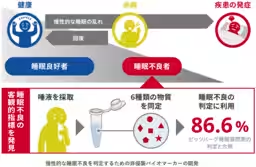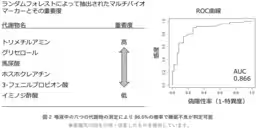

Revolutionary Discovery: Saliva Biomarkers for Chronic Sleep Disorders
Revolutionary Discovery: Saliva Biomarkers for Chronic Sleep Disorders
Recent breakthroughs in sleep disorder research from the National Institute of Advanced Industrial Science and Technology (AIST) and Ibaraki University have identified six specific metabolites in saliva that reliably indicate chronic sleep issues with an impressive accuracy of 86.6%. This non-invasive approach promises to reshape sleep health management by using easily collectable saliva samples instead of traditional subjective evaluation methods.
Understanding Chronic Sleep Disorders
As society increasingly recognizes the importance of sleep, chronic sleep disorders have become a significant public health concern. With studies revealing that one in five adults in Japan is unsatisfied with their sleep, understanding and diagnosing sleep disorders is crucial. Sleep-related issues not only affect daily performance but also heighten the risks for developing mental health disorders such as depression and other lifestyle diseases. Existing methods predominantly rely on self-reported questionnaires like the Pittsburgh Sleep Quality Index (PSQI), which can yield biased results due to their subjective nature.
The discovery of metabolites acting as biomarkers for sleep disorders marks a monumental shift in how these conditions can be diagnosed and monitored. In the study, researchers evaluated the saliva of 100 middle-aged Japanese men classified as either having good sleep quality (PSQI score of 2 or lower) or poor sleep quality (PSQI score of 6 or higher). Through advanced metabolomic analysis, they compiled a comprehensive dataset from 683 detected metabolites to identify the six that corresponded closely with sleep quality scores.
The Role of Metabolomics
Metabolomics, the study of metabolites in biological samples, played a critical role in this research. Using a technique known as CE-FTMS (Capillary Electrophoresis Fourier Transform Mass Spectrometry), researchers were able to separate and quantify various metabolites in saliva, leading to important insights into the biochemical landscape associated with sleep disorders. The use of random forest analysis, a machine learning technique, allowed the team to pinpoint six metabolites that proved crucial in distinguishing between individuals with normal and poor sleep quality.
These metabolites, some believed to have ties to bacterial activity within the gut or oral cavity, open the door to a deeper understanding of how sleep might interrelate with microbial health. Such breakthroughs continue to highlight the complexity of chronic sleep disorders and emphasize the need for innovative diagnostic tools.
Implications for Health Care
The implications of this research extend far beyond initial diagnostics. With an effective method to gauge sleep health reliably, self-care strategies can be employed in various settings like homes, workplaces, and care facilities for the elderly. By developing accessible saliva testing kits and devices, individuals would gain insights into their sleep quality, facilitating healthier lifestyle choices and interventions.
Future research endeavors will focus on refining these metabolite measurements and potentially incorporating them into treatment plans for patients suffering from severe sleep disorders, enhancing diagnosis and therapeutic effectiveness.
Conclusion
The journey from this initial discovery to its practical application represents a significant step forward in sleep research. As the study’s findings become published in the Scientific Reports journal in April 2025, they will undoubtedly encourage further exploration within the field. This is more than just a new method; it holds promise for a future where understanding sleep can be as straightforward as saliva collection, transforming both personal sleep management and professional healthcare practices.
For further details on this groundbreaking research, refer to the full study, which will be available in upcoming publications.



Topics Health)










【About Using Articles】
You can freely use the title and article content by linking to the page where the article is posted.
※ Images cannot be used.
【About Links】
Links are free to use.